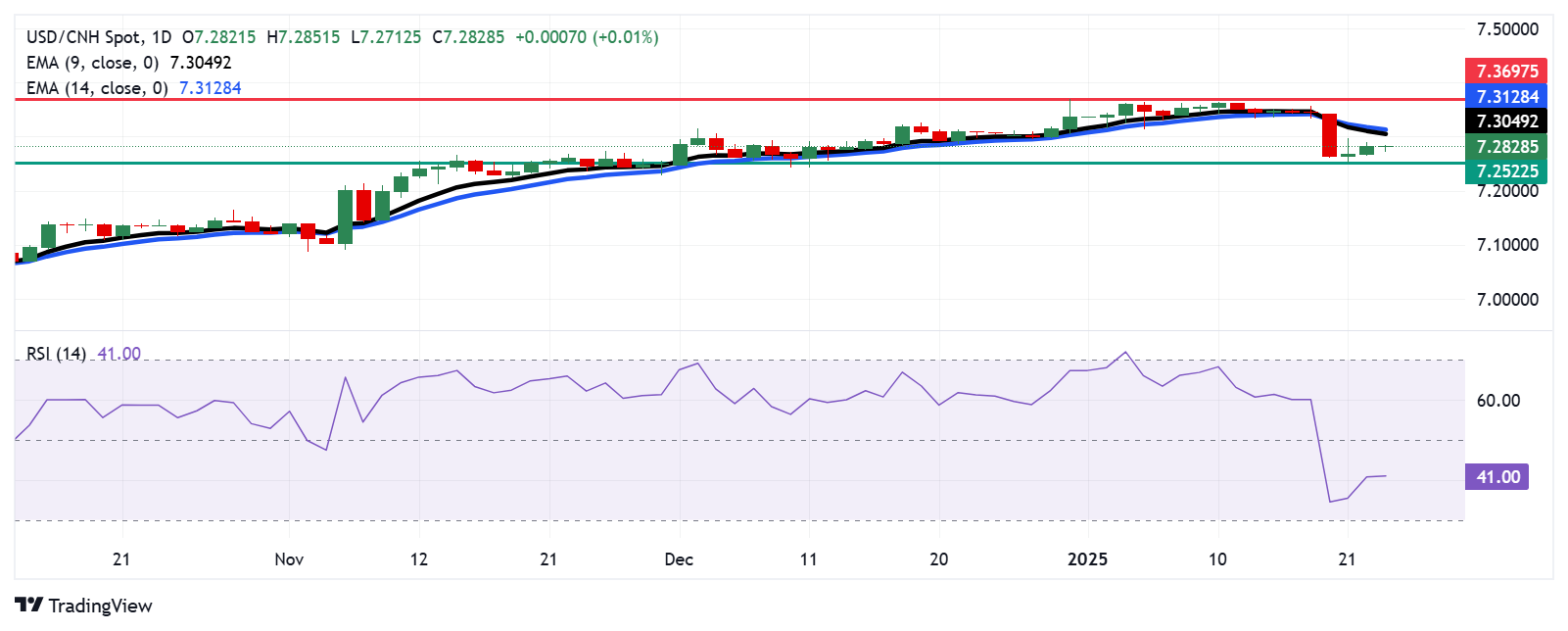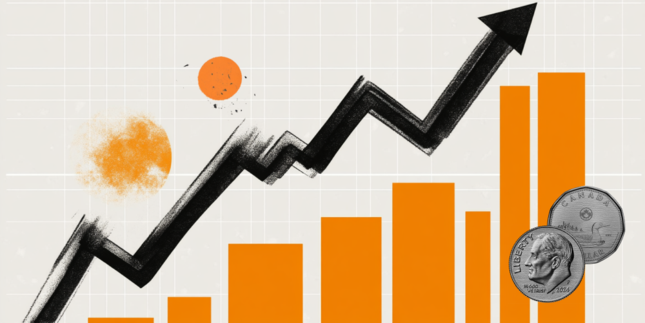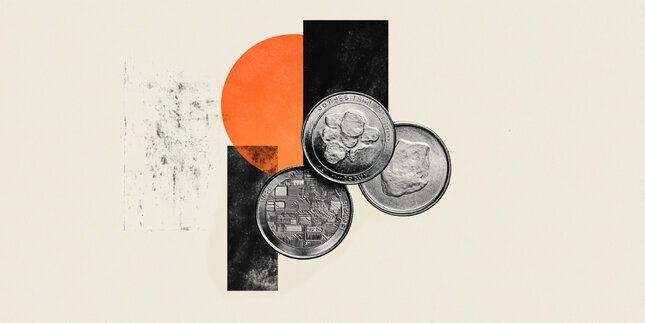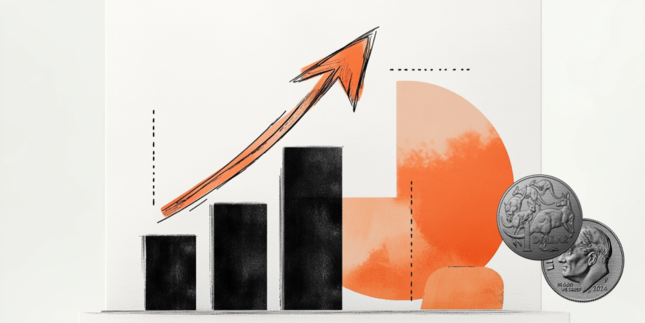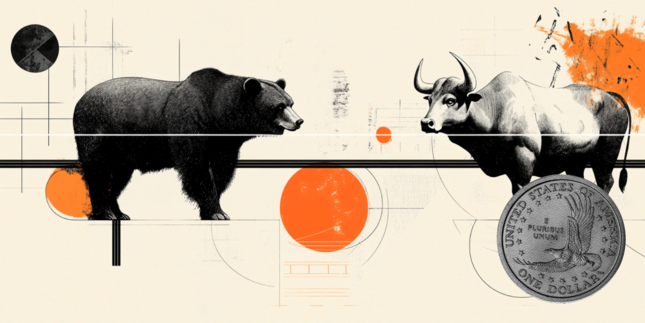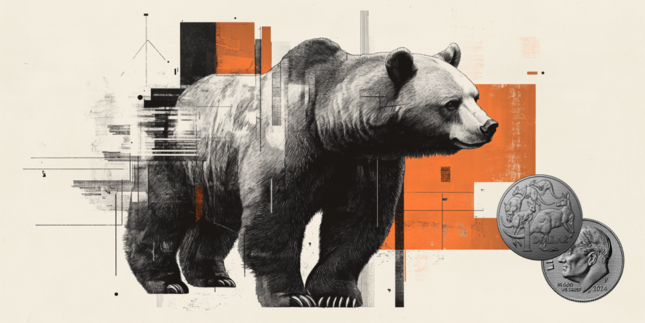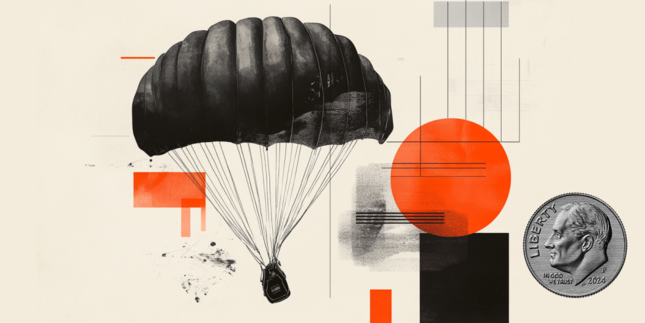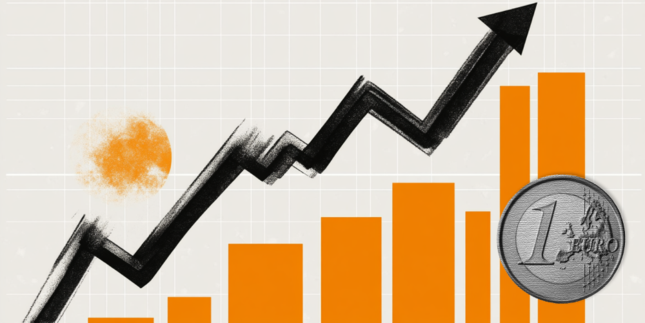-
Opps!
This language contents are not available!
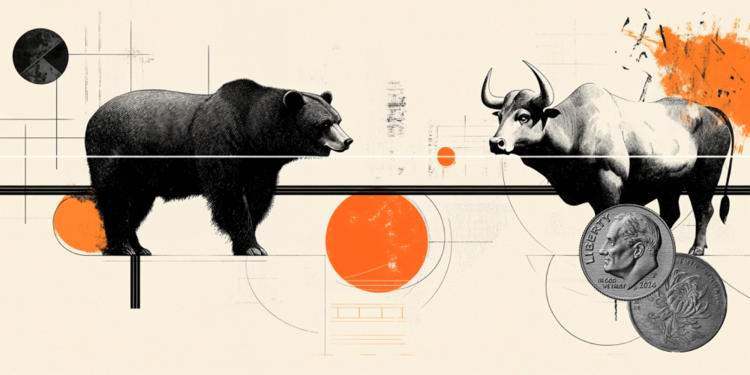
USD/CNH stays above 7.2800 despite new actions by Chinese authorities
- USD/CNH maintains its position amid the stable US Dollar and hawkish Fed.
- Trump administration plans to impose a 10% tariff on Chinese imports effective February 1.
- Chinese authorities permit 100 billion Yuan of pension funds to boost investments in domestic equities.
USD/CNH, representing the offshore Chinese Yuan (CNH), extends its gains for the third successive day on Thursday. The pair appreciates as the US Dollar (USD) receives support as traders expect the US Federal Reserve (Fed) to keep its benchmark overnight rate steady in the 4.25%-4.50% range at its January meeting. Moreover, Trump’s policies could drive inflationary pressures, potentially limiting the Fed to just one more rate cut.
US President Donald Trump stated that his administration is considering imposing a 10% tariff on Chinese imports starting February 1. However, the proposed tariff is significantly lower than the previously threatened 60% rate, it aligns with the pledge Trump made during his presidential campaign.
However, Chinese authorities on Thursday introduced several measures to stabilize its stock markets, including allowing pension funds to increase investments in domestic equities. A pilot scheme enabling insurers to purchase equities will be launched in the first half of 2025, with an initial scale of at least 100 billion Yuan. Meanwhile, the People’s Bank of China (PBoC) said that they “will expand the scope and increase the scale of liquidity tools to fund share purchases at the proper time.”
Technical Analysis: USD/CNH could find initial resistance at a nine-day EMA near 7.3100
The USD/CNH pair trades near 7.2820 during Asian hours on Thursday. A review of the daily chart shows the pair remaining below nine- and 14-day Exponential Moving Averages (EMAs), signaling a weaker short-term price momentum.
Additionally, the 14-day Relative Strength Index (RSI), a key momentum indicator, remains below the 50 mark, confirming a persistent bearish momentum.
On the downside, the USD/CNH pair may retest its six-week low at 7.2522, which was recorded on January 21. Further support appears around the psychological support level at 7.2000 level.
The USD/CNH pair may find initial resistance around the nine-day EMA at the 7.3048 level, followed by the 14-day EMA at the 7.3127 level.
USD/CNH: Daily Chart
PBOC FAQs
The primary monetary policy objectives of the People's Bank of China (PBoC) are to safeguard price stability, including exchange rate stability, and promote economic growth. China’s central bank also aims to implement financial reforms, such as opening and developing the financial market.
The PBoC is owned by the state of the People's Republic of China (PRC), so it is not considered an autonomous institution. The Chinese Communist Party (CCP) Committee Secretary, nominated by the Chairman of the State Council, has a key influence on the PBoC’s management and direction, not the governor. However, Mr. Pan Gongsheng currently holds both of these posts.
Unlike the Western economies, the PBoC uses a broader set of monetary policy instruments to achieve its objectives. The primary tools include a seven-day Reverse Repo Rate (RRR), Medium-term Lending Facility (MLF), foreign exchange interventions and Reserve Requirement Ratio (RRR). However, The Loan Prime Rate (LPR) is China’s benchmark interest rate. Changes to the LPR directly influence the rates that need to be paid in the market for loans and mortgages and the interest paid on savings. By changing the LPR, China’s central bank can also influence the exchange rates of the Chinese Renminbi.
Yes, China has 19 private banks – a small fraction of the financial system. The largest private banks are digital lenders WeBank and MYbank, which are backed by tech giants Tencent and Ant Group, per The Straits Times. In 2014, China allowed domestic lenders fully capitalized by private funds to operate in the state-dominated financial sector.
Forex News
Keep up with the financial markets, know what's happening and what is affecting the markets with our latest market updates. Analyze market movers, trends and build your trading strategies accordingly.
